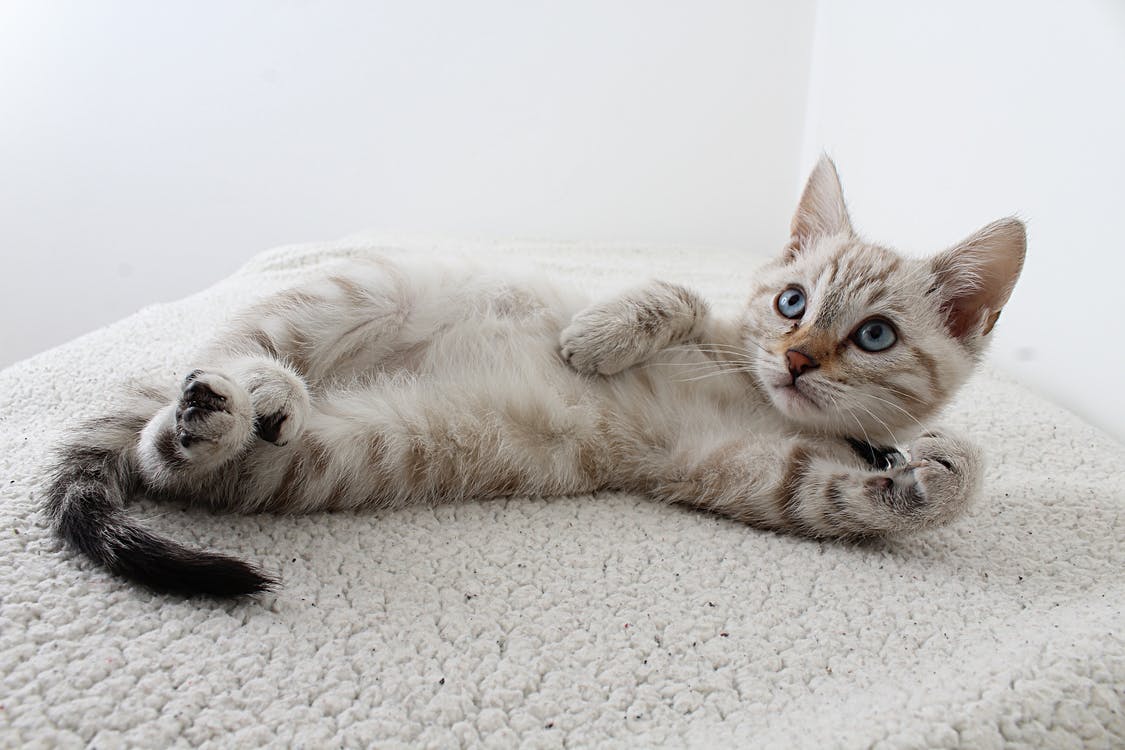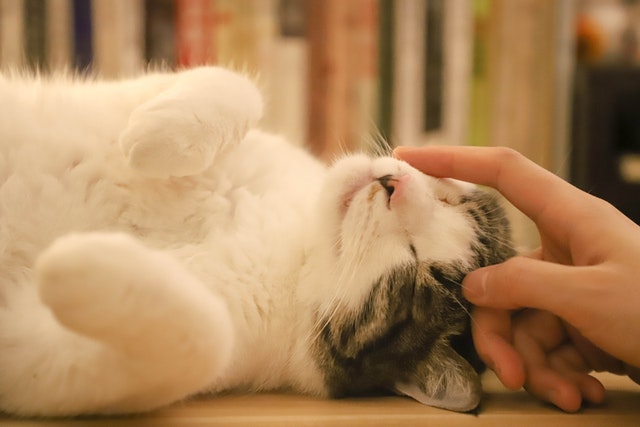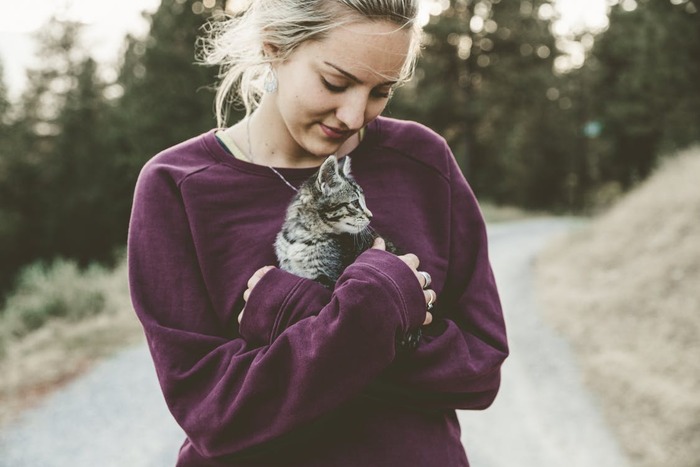
Having a loyal and affectionate paw friend at home make us feel loved and relaxed. Our dogs and cats provide us with unconditional love and help us in many ways both emotionally and physically. As you may already know, you can make your pet, whether a dog, a cat or another domesticated specie, an Emotional Support Animal. In order to do that you need to have a letter issued by a mental health professional and train your pet in basic obedience to ensure that he/she is well-mannered and socialized.
In today’s article we will talk about the second part of the process of making a pet an ESA and namely-how to train your pet, if it is a cat, to become an Emotional Support Animal. Although cats put a great value on their privacy and are not likely to follow rules, they can be trained. Many people benefit from Emotional Support Cats, due to their cuddling and loving nature, that provides a feeling of love and calmness. Before starting the training process you may need to answer a few questions.
What to Consider Prior to Start Training Your Cat as an Emotional Support Animal
Does Your Cat Have the Right Temperament to Be an ESA
We have mentioned in many of our dog training articles, that dogs should be evaluated case by case as individuals with their own temperaments and personality. We can say that this statement is also valid for cats. However, all types of assistance animals should have certain features to fulfill their role. Emotional Support Animals should be friendly, loving, easy-going and have a calm disposition. Of course, mild behavioral issues may occur at all times. This is pretty normal, especially if the animal is at a young age and has not been socialized yet. However, cats who tend to be aggressive, very anxious, very stubborn and have an unfriendly personality in general, are not likely to become good ESAs. That is why you should evaluate your cat’s personality and determine whether your feline friend can play the role of an ESA or not.
Learn How Your Cat Express Him/Herself
Knowing your cat’s personality and body language means that half part of the job is already done. It is important for you to be able to recognize your cat’s moods-when he/she is calm, happy, mad, afraid... The ability to read your cat’s body language will help you recognize when you should keep doing what you are doing, when you need to stop, what aspects of training or socialization should be improved...etc. You should never force your cat to do anything that he/she does not feel uncomfortable with, as he/she may stop trusting you.
Do You Have Time and Patience
Emotional Support Animals do not require specialized training, as they do not perform tasks directly related to a certain disability. However, this does not mean that they do not require training at all. ESAs go through basic obedience and socialization. In order to make your cat a good ESA, you should invest time in socializing him/her and be patient during the training process. Cats are likely to be more difficult to train, as they do not have the innate need to please us.
What Age is Your Cat
If you have an adult cat, do not get discouraged! Adult cats still can be trained in obedience skills. However, it could take longer to socialize your little fellow, especially if he/she did not get used to spending time with unfamiliar people. It is important that you begin the process of training at socializing while your kitty is still young.

How to Begin With The Actual Training
Socialization
- Start At Home
The first essential part of making your cat an ESA is proper socialization. You can start socializing your feline friend at home. Try to pet your kitty all over the body to make sure that he/she feels comfortable and remains calm when petted. You can start stroking him/her on the head and move to the rest of their body including the tail. Also, you can gently hold your kitty’s front paw for a few seconds and monitor his/her behavior. Reward him/her if he/she stays calm and relaxed. If you notice that he/she does not enjoy being petted too much on certain areas, you may need to work on that later. Keep the sessions short and give your cat treats every time he/she remains composed. Do not overdo the petting sessions, and always supervise the reactions of your kitty. End the sessions while your kitty still enjoys them so that he/she keeps a positive attitude towards them. If you notice that your cat starts showing irritation, end the session immediately and repeat it later, when your paw friend is calm. If your kitty is too playful, you may want to wait for him/her to spend the excessive amount of energy first. Also, feeding time may not be the proper time for petting or training sessions, so do not engage with your kitty while he/she is eating.
- Involve Other People
Invite your relatives or friends home, so that they can interact with your cat. We would recommend that you let your kitty make the first step and approach them first. Your friends can try to pet your feline friend. You should prepare your cat’s favorite treats or toys and let your friends give them to him/her, in case he/she does not seem very interested in or afraid of interaction. Once your kitty shows that he/she feels comfortable, after he/she received a treat or a toy, your friends can try again to pet him/her. They should start from the areas where he/she enjoys being petted and gradually move all over the body.
- Socialization Outside Your Home
The next part of the process of socialization should take place outside your home. Move to this part only after you are confident that your cat responds well to interactions within your home, where he/she already knows the environment. In order to socialize your kitty in unfamiliar areas, you can enroll in classes where your cat can meet other cats (vaccinated and healthy) and their owners or visit your relative’s/friend’s home. Let your friends pet your cat and eventually hold him/her if he/she seems to be comfortable with that. They can also gently talk to the kitty to help him/her remain relaxed and give him/her a treat as a reward for the calm behavior.
As a next step you can try to help your kitty adapt to riding in a car or another type of vehicle. That way your cat will remain calm if you need to bring him/her to a veterinarian, to a socialization course or otherwise take him/her outside your home.

Train Your Cat in Basic Obedience
In my article “How to Be a Cat Trainer” I explained some simple steps on how to train your cat basic commands like “sit” or “come”. If you have not read this article yet, you can learn about these training techniques from this article as well.
- Clicker Training
Clickers can be very useful tools that will help you shape your kitty’s behavior. The idea behind these tools is simple-every time your kitty does something you want to reinforce, in other words to encourage him/her to do in a future, you should click. Clicking means marking the behavior. After you click you should give your kitty a reward (usually treats/ or any food that he/she values). Over time your cat is likely to start pairing the sound produced by the clicker with a reward.
- “Sit”
In order to train your kitty to sit, you can wait for him/her to perform this behavior naturally, then click with a clicker or use a distinctive sound to mark the behavior and immediately reward him/her. Over time, you can incorporate the cue word “sit” and use it at the moment before your kitty’s butt touches the ground. The first method is the so-called “capturing” method.
The second method is based on luring your cat with treats. You just need to hold a treat in your hand and move it above your kitty’s head. You can expect your cat to sit in order to keep following the treat with eyes. The second method is the so-called “luring” method. It is important that you always mark the performed behavior with a clicker or another distinctive sound and keep the training sessions no longer than 4-5 minutes.
- “Come”
Another basic obedience command that you can teach your cat to perform is to come when called. At the beginning you should call your cat (use a word or a distinctive sound and do not change it over time) right before you open his/her food can. Over time your cat may start associating the word/sound with something pleasant (food) which will motivate him/her to come to you. At the beginning of the training process, you should call your cat right before feeding. Step by step you can start calling him/her outside the feeding time-say the chosen word / produce the sound, click when your cat comes to you to mark the behavior and reward him/her.
- “Stay”
You will be able to train your kitty the “stay” command only after he/she has already learned the “sit” command. Prepare a certain area in your home without distractions. Give your kitty the “sit” command and make a small step away from him/her. If he/she does not move, click with the clicker / use a distinctive sound, say “stay” and give him/her a reward, if he/she does not move. It is recommended that you make small movements at the beginning. If he/she moves, stop and try again with even smaller movements. Increase the distance gradually and prepare a lot of treats to reward the wanted behavior.
Remember that the training sessions with a cat may require more repetitions than these with a dog. A useful tip that will definitely will help you train your cat in basic obedience is: Do not expect your kitty to perform a certain behavior after he/she has eaten. Since food is the primary motivator for cats, you should conduct training prior to feeding time.
If you would like to read more about cats as Emotional Support Animals, you can read our article “Can Your Cats Be Emotional Support Animals”.











